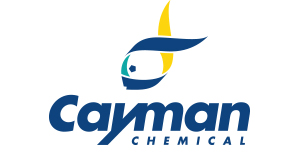Ninjurin-1 Extracellular Domain (rat, recombinant)
Ninjurin-1 Extracellular Domain (rat, recombinant)
SKU
CAY41069-100
Packaging Unit
100 µg
Manufacturer
Cayman Chemical
Availability:
loading...
Price is loading...
Formulation: Lyophilized from sterile PBS, pH 7.4
Purity: ≥95% estimated by SDS-PAGE
Formula Weight: 0
Shelf life (days): 365
Notes: Ninjurin-1 is a type 3b transmembrane protein and adhesion molecule.{67783} It is composed of an N-terminal extracellular domain containing a region required for homophilic binding, two transmembrane domains, a short intracellular region, and a second extracellular domain at the C-terminal.{67783,67784} The N-terminal extracellular domain can be cleaved by matrix metalloprotease-9 (MMP-9) to release soluble ninjurin-1 (sNinj1).{67785} Ninjurin-1 is expressed in Schwann cells, neurons, and certain activated immune cells, including macrophages and T cells, as well as embryonic and adult epithelial tissues.{67783,67786} It is involved in cell adhesion, axonal growth, and chemotaxis, as well as cell lysis and damage-associated molecular pattern (DAMP) molecule release during pyroptosis, among other activities.{67784,67786} NINJ1 knockout reduces disease severity in a mouse model of experimental autoimmune encephalomyelitis (EAE).{67787} The expression of Ninj1 is increased in Schwann cells and dorsal root ganglion neurons after nerve injury in rats, and ninjurin-1 is involved in peripheral nerve regeneration after sciatic nerve injury in mice.{67786,67788} An A-C reversal in the third exon of NINJ1, which results in an aspartate-to-alanine mutation, increases the likelihood of developing nerve damage in patients with leprosy.{67786} Serum levels of sNinj1 are increased in patients with hepatocellular carcinoma and are positively correlated with tumor size, cancer stage, and metastasis.{67785} Cayman’s Ninjurin-1 Extracellular Domain (rat, recombinant) protein is a disulfide-linked homodimer. The reduced monomer, composed of ninjurin-1 (amino acids 1-79) fused to human IgG1 Fc at its N-terminus, consists of 340 amino acids and has a calculated molecular weight of 37 kDa. As a result of glycosylation, the monomer migrates at approximately 50 kDa by SDS-PAGE under reducing conditions.
Purity: ≥95% estimated by SDS-PAGE
Formula Weight: 0
Shelf life (days): 365
Notes: Ninjurin-1 is a type 3b transmembrane protein and adhesion molecule.{67783} It is composed of an N-terminal extracellular domain containing a region required for homophilic binding, two transmembrane domains, a short intracellular region, and a second extracellular domain at the C-terminal.{67783,67784} The N-terminal extracellular domain can be cleaved by matrix metalloprotease-9 (MMP-9) to release soluble ninjurin-1 (sNinj1).{67785} Ninjurin-1 is expressed in Schwann cells, neurons, and certain activated immune cells, including macrophages and T cells, as well as embryonic and adult epithelial tissues.{67783,67786} It is involved in cell adhesion, axonal growth, and chemotaxis, as well as cell lysis and damage-associated molecular pattern (DAMP) molecule release during pyroptosis, among other activities.{67784,67786} NINJ1 knockout reduces disease severity in a mouse model of experimental autoimmune encephalomyelitis (EAE).{67787} The expression of Ninj1 is increased in Schwann cells and dorsal root ganglion neurons after nerve injury in rats, and ninjurin-1 is involved in peripheral nerve regeneration after sciatic nerve injury in mice.{67786,67788} An A-C reversal in the third exon of NINJ1, which results in an aspartate-to-alanine mutation, increases the likelihood of developing nerve damage in patients with leprosy.{67786} Serum levels of sNinj1 are increased in patients with hepatocellular carcinoma and are positively correlated with tumor size, cancer stage, and metastasis.{67785} Cayman’s Ninjurin-1 Extracellular Domain (rat, recombinant) protein is a disulfide-linked homodimer. The reduced monomer, composed of ninjurin-1 (amino acids 1-79) fused to human IgG1 Fc at its N-terminus, consists of 340 amino acids and has a calculated molecular weight of 37 kDa. As a result of glycosylation, the monomer migrates at approximately 50 kDa by SDS-PAGE under reducing conditions.
| SKU | CAY41069-100 |
|---|---|
| Manufacturer | Cayman Chemical |
| Manufacturer SKU | 41069-100 |
| Package Unit | 100 µg |
| Quantity Unit | STK |
| Product information (PDF) | Download |
| MSDS (PDF) |
|

 Deutsch
Deutsch










